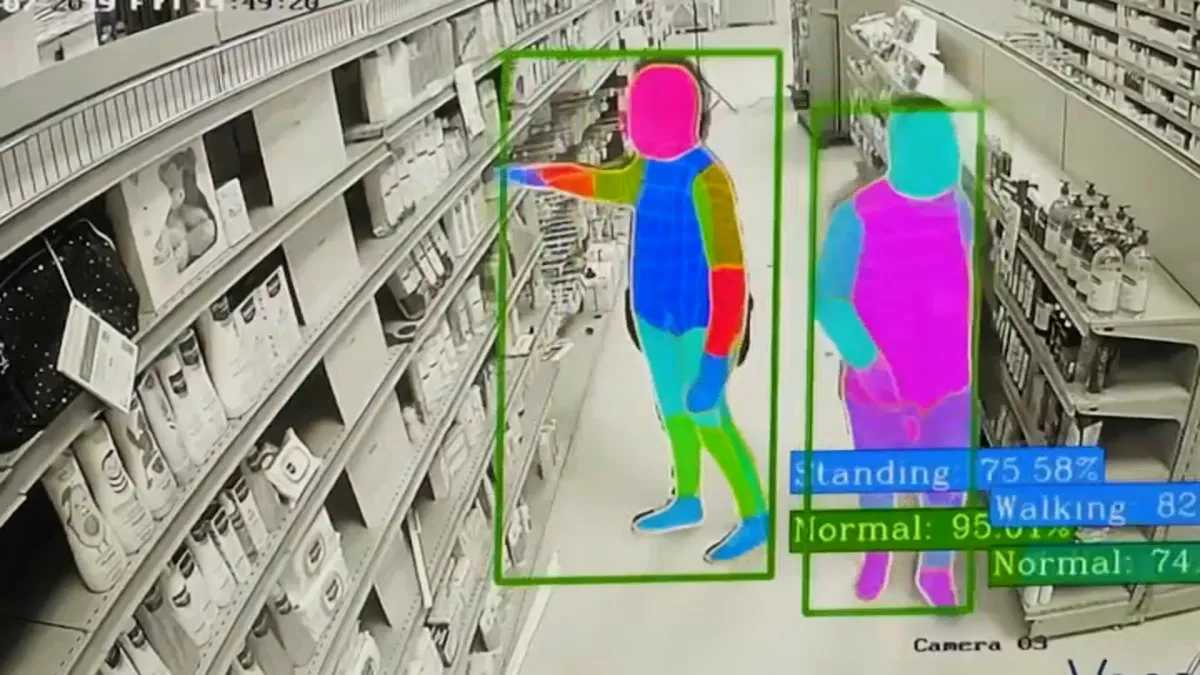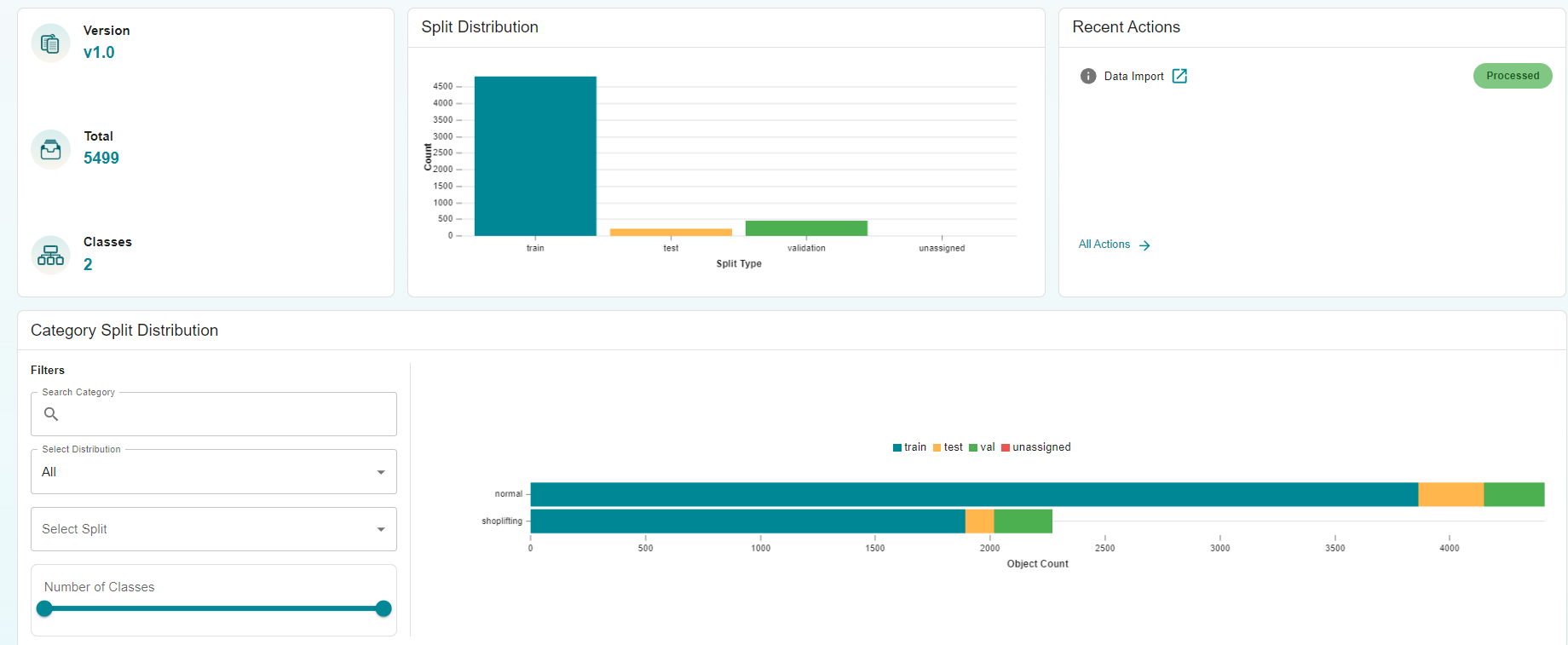Retail Theft Detection Using AI: A Comprehensive Guide with Matrice
Retail theft is a major challenge for store owners, leading to significant losses each year. Traditional theft prevention methods are often reactive and labor-intensive. However, by using AI-powered detection systems, stores can proactively identify suspicious activities and prevent theft in real-time. This guide outlines how to develop a retail theft detection system using Matrice, enabling automated identification and monitoring within retail spaces to enhance security and reduce losses.

Understanding Computer Vision in Retail Security
The Role of Computer Vision
Computer Vision (CV) enables automated detection of theft-related activities by analyzing footage from surveillance cameras in real time. By leveraging CV, security systems can identify suspicious behaviors without needing constant manual monitoring, allowing store owners to address potential incidents swiftly and reduce theft occurrences.
Key Capabilities of CV in Retail Security
Automated Theft Detection: CV systems can recognize behaviors indicative of theft, such as shoplifting, reducing the dependency on security personnel.
Efficient Video Analysis: High-resolution imaging and CV algorithms ensure thorough video monitoring, improving accuracy in detecting theft-related activities.
Real-Time Alerts: With real-time detection, store managers can receive immediate notifications of suspicious activity, enabling prompt responses.
Data-Driven Insights: CV data provides insights into theft patterns, helping stores optimize security measures and reduce theft incidents over time.
Impact on Retail Theft Prevention
Integrating CV-based theft detection into retail operations provides several benefits:
Reduced Theft Losses: Automated detection minimizes theft by catching suspicious activities early.
Enhanced Security: CV improves overall security by enabling proactive monitoring and timely intervention.
Improved Store Efficiency: With automated surveillance, stores can monitor larger areas without requiring extensive staff presence.
Data-Backed Decision Making: By analyzing detection data, stores can identify high-risk areas and optimize security placement.
The Challenge: Detecting Retail Theft
Traditional Theft Detection Challenges
Relying solely on manual surveillance presents several challenges:
Human Error: Manual monitoring is prone to oversight and fatigue, leading to missed theft incidents.
Limited Coverage: Security personnel may not cover all store areas effectively, especially during peak hours.
Delayed Response: Without real-time alerts, response times can lag, reducing the chance of apprehending shoplifters.
High Operational Costs: Manual monitoring requires continuous personnel resources, increasing costs.
The Solution: Automated Retail Theft Detection with Matrice
Matrice offers a robust platform for implementing AI-based retail theft detection. It provides two main approaches:
No-Code Interface: Matrice’s no-code platform allows users to deploy theft detection models without requiring programming knowledge.
SDK for Customization: Advanced users can leverage Matrice’s SDK for more tailored detection algorithms and model adjustments.
Implementing Retail Theft Detection with Matrice
In this guide, we walk through the key steps to develop an effective retail theft detection model using Matrice:
Dataset Preparation
Dataset Import
Model Configuration and Training
Model Evaluation
Model Inference
Model Deployment
Step 1: Dataset Preparation
A high-quality dataset is essential for developing a reliable detection model. The dataset for this retail theft detection project contains images from surveillance footage, capturing various shoplifting scenarios and regular shopper behaviors.
The dataset breakdown is as follows:
Image Categories: The dataset includes two primary classes: “normal” and “shoplifting.”
Data Splitting: The dataset has been divided into training (80%), validation (10%), and testing (10%) sets to ensure balanced learning and evaluation.
Dataset Summary:
Label |
Total Count |
Train Count |
Validation Count |
Test Count |
|---|---|---|---|---|
normal |
4414 |
3864 |
264 |
286 |
shoplifting |
2269 |
1893 |
251 |
125 |

Step 2: Dataset Import
Matrice makes it easy to import and organize datasets:
Upload: Images were uploaded to Matrice for streamlined management.
Dataset Review: Matrice provides a quick overview of dataset details, including image count and label distribution, allowing quality checks before training.
Step 3: Model Configuration and Training
For retail theft detection, we selected the YOLOv9 model for its high accuracy and real-time detection capabilities. Key configuration parameters included:
Batch Size: Set to 8 to ensure efficient processing without straining the GPU.
Epochs: Configured to 100, enabling sufficient learning cycles for the model.
Learning Rate: Set at 0.001 to balance learning speed and stability.
Matrice’s AutoML feature further optimized these parameters, helping to improve model performance.

Step 4: Model Evaluation
Once training was complete, we evaluated the model using several metrics to validate its accuracy and reliability in detecting theft-related behaviors:
mAP@50 (Mean Average Precision at IoU 50): This metric measures overall detection accuracy.
Precision: Indicates how accurately the model detects theft, minimizing false positives.
Recall: Reflects the model’s ability to identify all instances of theft, reducing missed incidents.
Metric |
Value |
|---|---|
mAP@50 |
0.88 |
Precision |
0.85 |
Recall |
0.89 |
These metrics demonstrate the model’s ability to accurately detect and differentiate between normal activities and potential shoplifting incidents.
Step 5: Model Inference
After evaluation, we prepared the model for deployment by exporting it in formats compatible with various security systems:
Export Formats: The model was exported in ONNX and TensorRT formats for easy integration with security systems.
Real-Time Inference: These formats enable the model to process surveillance footage in real time, delivering instant alerts on suspicious activities.
Step 6: Model Deployment
Matrice simplifies the deployment process, allowing seamless integration of the model into store security setups:
API Integration: The model was deployed on Matrice’s API-enabled servers, making it accessible to the store’s security system.
Real-Time Monitoring: With API-based deployment, stores can access the model for real-time theft detection.
Data Logging: Detected incidents are logged and synced to central databases, aiding in theft pattern analysis and improving store security policies.
Conclusion
Using Matrice to implement retail theft detection with AI significantly enhances store security and reduces theft losses. By automating the detection of shoplifting behaviors, this system allows store managers to respond promptly to suspicious activities, ensuring a safer shopping environment for customers and staff.
Matrice’s powerful platform provides retailers with accessible tools to develop, deploy, and manage theft detection models, transforming security operations to reduce losses and increase operational efficiency.
Think CV, Think Matrice
Experience 40% faster deployment and slash development costs by 80%